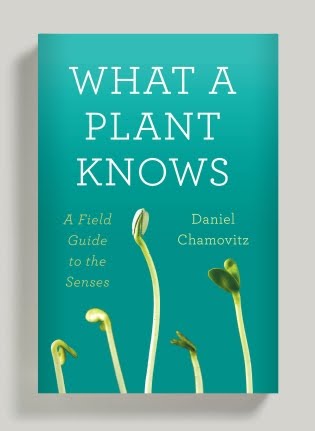Science News
Plant Senses
July 16, 2012

What a Plant Knows, a recent book by Daniel Chamovitz, provides a history of plant research through the lens of human senses. The chapters take us through what a plant sees, smells, feels, hears and remembers starting with botanical research 100 years before Charles Darwin, through Darwin and his son Francis, to modern-day DNA studies and experiments on the International Space Station.
Of course, plants do not have brains to receive the information they gather, but they do have ways of obtaining and storing that information. Plants don’t have eyes, but do sense light in many different wavelengths. Plants also have a photoreceptor that controls the plant's internal clock (think circadian rhythms). Chamovitz argues that plants can get jet lag.
Likewise, a plant has no nose, but experiments prove that they do smell. These "senses" let plants know when to fruit and deter parasites, among other things. The scent of ripening fruit hastens other fruit to ripen. And many researchers have shown that as plants are attacked by insects, they emit an odor that strengthens the rest of the plant and others around it to produce a toxic chemical that wards off the bugs.
Scientists have also found that touching a plant can hurt or stimulate its growth depending on the species. A Venus flytrap, Dionaea muscipula, can so acutely feel prey in its leaf, it can quickly spring its leaves together to trap an insect.
Contrary to popular belief plants do not hear. Or if they do, there's simply not enough evidence to prove it yet. Chamovitz lays the case that plants could be deaf and compares deaf genes in both plants and humans.
Plants also sense gravity and seem to have a rudimentary memory system, recalling when to bloom and previous hardships, even several generations back.
Chamovitz stresses he's not anthropomorphizing, but rather demonstrating the awareness of plants to their environment.
What a Plant Knows is a really engaging and informative book with glimpses at modern and ancient research on our oft-overlooked neighbors.